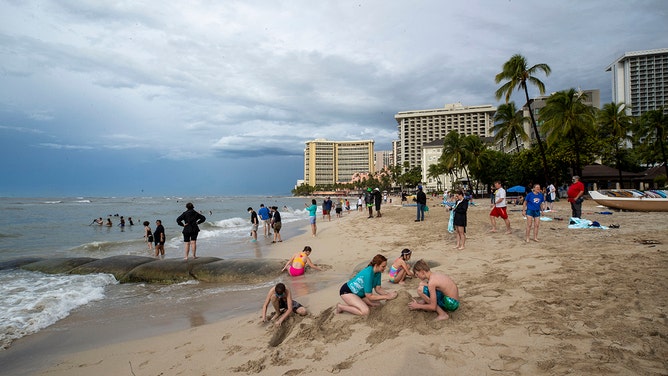What is a Kona Low?
A storm system referred to locally as a “Kona Low" turns sunny beach days in paradise into rainy ones at the tiki bars. They can create tremendous amounts of rain and even heavy snow over the highest mountain summits.
What is a Kona Low?
Hawaiian weather often brings to mind visions of abundant sunshine, but Kona Low storm systems frequently bring tremendous amounts of precipitation to the islands.
Hawaii's weather is dominated by the typical fair-weather trade winds which blow from the northeast.
However, a storm system referred to locally as a "Kona Low" flips the winds around to the opposite direction, turning sunny beach days in paradise into rainy ones at the tiki bars.
When a Kona Low forms near or west of the Hawaiian Islands, the counterclockwise flow around it results in southwesterly winds over much of the state. That brings moisture-rich air over the so-called kona side of the mountains.
HELICOPTER CREW CAPTURES MESMERIZING VIDEO OF A FULL-CIRCLE RAINBOW IN HAWAII

Visitors play on Waikiki Beach in Honolulu, Hawaii, on Dec. 7, 2021, as a powerful storm known as a Kona Low hit the Hawaiian Islands with heavy rain and high winds causing widespread flooding and power outages across the state.
(EUGENE TANNER / AFP / Getty Images)
Kona comes from the Hawaiian word for "leeward" – the side sheltered from the typical northeasterly trade winds.
Yet during a Kona Low, the leeward side becomes the windward side as southwesterly winds blow across the islands. That wind direction is loaded with abundant Pacific moisture, which interacts with the islands' topography and can create tremendous amounts of rain and even heavy snow over the highest mountain summits.
The storms are also capable of producing high winds, hail and thunderstorms, in addition to the winter fury atop the volcanoes.
These Kona storms are most common between October and April in Hawaii and get their power from cold centers instead of the warm centers that fuel hurricanes and tropical storms.
